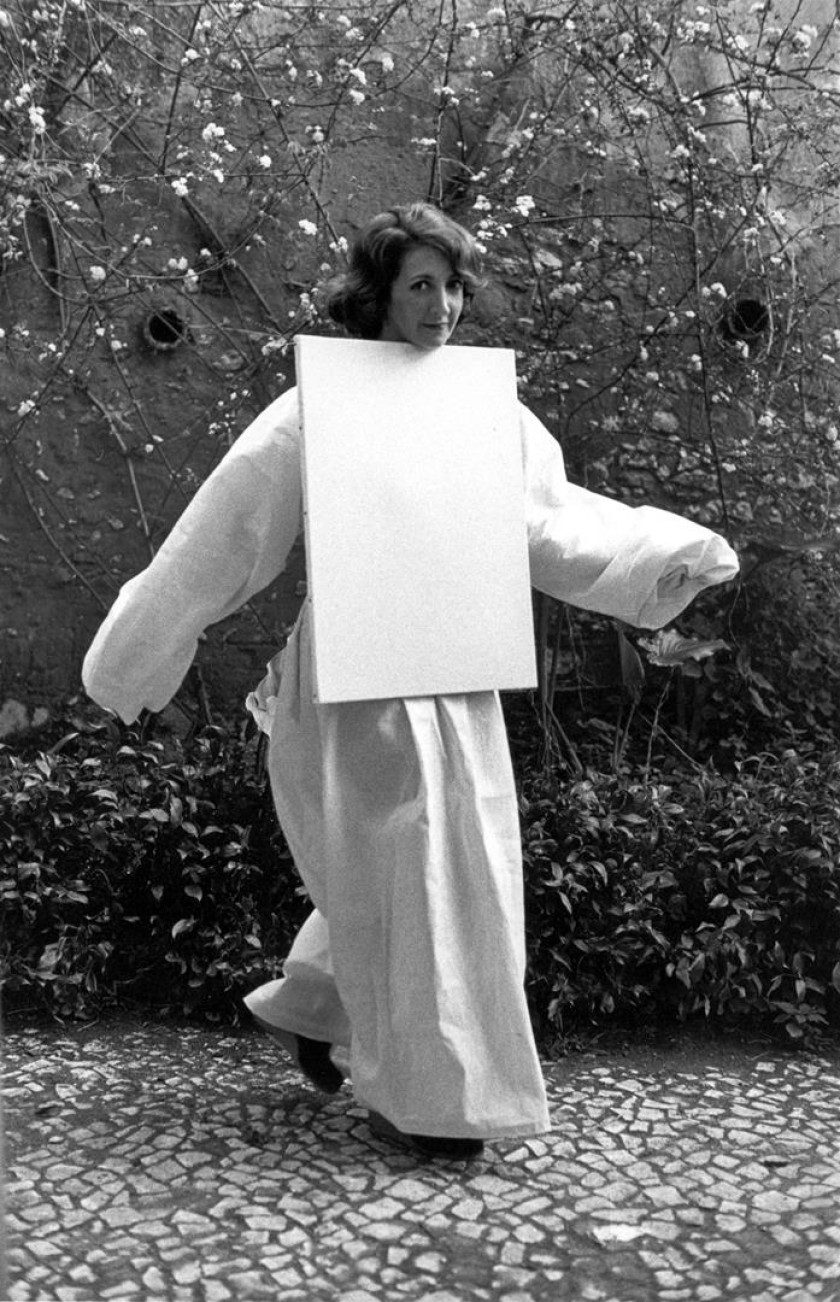Tela Habitada [Inhabited Canvas]
photography


1976
Silver gelatin print
203 x 127 cm
Helena Almeida is a leading name in the neo-avant-garde in Portugal. She While she studied painting, but it didn't take her long to put an end to she soon eschewed the regime of separation of the arts in which she was trained.
If his her initial works (1967-1969), already announced prefigured this rupture , by subjecting the canvas to successive iterations, with a view to the growing objectification of painting,; the “‘departure’” from the physical space of painting towards other media took place in the following decade. The production of this period then thus marks the artist's move into the field of performance for the camera, where painting and drawing reappear mediated by photography and film. At the same time, these years bring a new fact feature that will define her future work: Helena Almeida's body, which had been formerly outside the paintings, is was now integrated, taking on the role of performer.
Tela Habitada [Inhabited Canvas], from 1976, follows on from Tela Rosa para Vestir [Pink Canvas for Dressing], from 1969, one of the artist's first performances for photography. Helena Almeida described it as an “‘anthropomorphic” ’ canvas and indeed that is , in fact, that's what we see again in this second photograph, taken two years after the April Revolution. Here too, the artist appears literally dressed as a canvas and a game of overlapping canvases takes place, with one difference: it i's not the portrait of a still, frontal body that we a're interested in exploring again , even(al though we a're in the same realm of staged self-representation), but the record of the body involved in an action taking place in a given space. Wrapped in a canvas fabric up to her feet, Helena Almeida carries a blank canvas cradled to her chest and is photographed walking in a garden. This body-screen looks at the camera, while confirming the assumption of some decisive operations in the artist's work, which are absolutely innovative in Portuguese artthe country: the corporalization corporalisation of the painting produced by the action and gesture photographed; the image as a construction of the body in relation to space and time; the reversibility of subject/artist-object and the performativity of the female gender.
Sofia Nunes